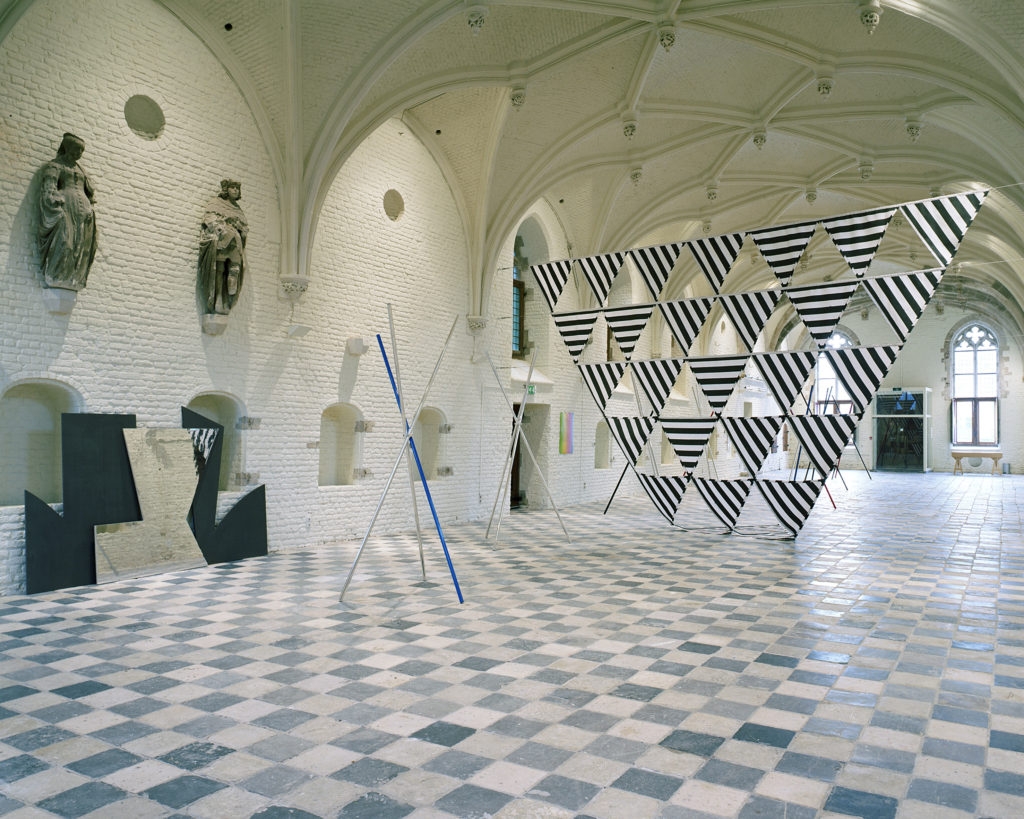Fraktur
Riccardo Previdi
Solo exhibition
8 February – 29 March 2009
Vleeshal (Map)
Curator: Lorenzo Benedetti

For his first solo show in the Netherlands, Riccardo Previdi (Milan 1974; lives and works in Berlin) analyzes the unique style of De Vleeshal while at the same time juxtaposing and drawing connections between different aspects of the Gothic style.
The show’s title, 'Fraktur' (from the Latin fractus: “broken up”), refers to a particular type of Gothic script (also known as “blackletter”). This was the script in which – thanks to the invention of movable type – Johannes Gutenberg printed the B42 (42-line Bible) in 1455 in Mainz, Germany, more commonly referred to as the 'Gutenberg Bible'.
Previdi’s show plays with the idea of the Bible as the first industrial product and mass medium and reflects on what Arnold Hauser calls the “dualism of Gothic art” in his work The Social History of Art while discussing how the period was one of transition between antiquity and modernity. This idea of coming together – and confrontation – between two antithetical visions of the world, which brought about a truly unique shift in medieval society, is the show’s dominant element.
As part of the exhibit, the main hall of De Vleeshal, Middelburg’s former meat market, is divided into two sections that are in turn sub-divided by a series of geometric alterations. These elements blend together the characteristics of the architectural environment with those of the decorations found in illuminated manuscripts, which were the first works to be printed by Gutenberg.
In exploring the interplay between the complexity of the Gothic style and a possible reincarnation in the current day and age, Previdi provides fresh readings of the architectural environment using three series of works. 'Fraktur' (2009) is an oversized pennant composed of 28 cloth triangles bearing black and white stripes that both echo and 'shatter' the black-and-white checkered flooring. 'Illuminati' (2009) contains a number of self-supporting structures made up of polished and varnished aluminum tubes. Like the scattered sticks of the game 'Mikado', these tubes draw and reflect lines of color on the regimented black and white pattern of the flooring. Lastly, the sculptures belonging to the series 'G' (2009) are planks made of MDF and reflective polystyrene that echo the shape of different parts of the letter G. By leaning upon the outer walls of the space, these fragments open up gashes in the building’s 'skin'.
Previdi’s works frequently deconstruct the concept of history by juxtaposing historical documents and elements of contemporary pop culture. In keeping with this approach, this show contains many echoes of the work of Ramellzee, the multifaceted and complex New York-based (graffiti) writer and rapper whose work “Gothic Futurism” imagines a bloody battle between the letters of the alphabet and versions of them that have undergone morphological transformations.